Why Smash Burgers Have Taken Over the Food World
A smash burger is a thin beef patty that’s literally smashed onto a super-hot griddle or skillet to create maximum surface contact. This simple technique produces a crispy, caramelized crust while keeping the interior juicy – and it’s exactly why these burgers have become the hottest trend in casual dining.
Quick Smash Burger Facts:
- What it is: Ground beef ball pressed flat on a hot griddle
- Key feature: Crispy, lacy edges from the Maillard reaction
- Cook time: 2-3 minutes per side (much faster than thick patties)
- Best beef: 80/20 ground chuck for optimal fat content
- Origin: 1960s Midwest diners, popularized by chains in the 2000s
The technique started in 1960s Kentucky when a cook at Dairy Cheer used a bean can to press burger patties flat. Modern food culture has acceptd smash burgers because they deliver maximum flavor in minimum time. The high heat creates the Maillard reaction, which caramelizes proteins and sugars to form those coveted crispy, brown edges.
From food trucks to fast-casual chains nationwide, smash burgers have sparked a “burger revolution.” They’re perfect for our current food moment – quick to make, Instagram-worthy, and packed with bold flavors.
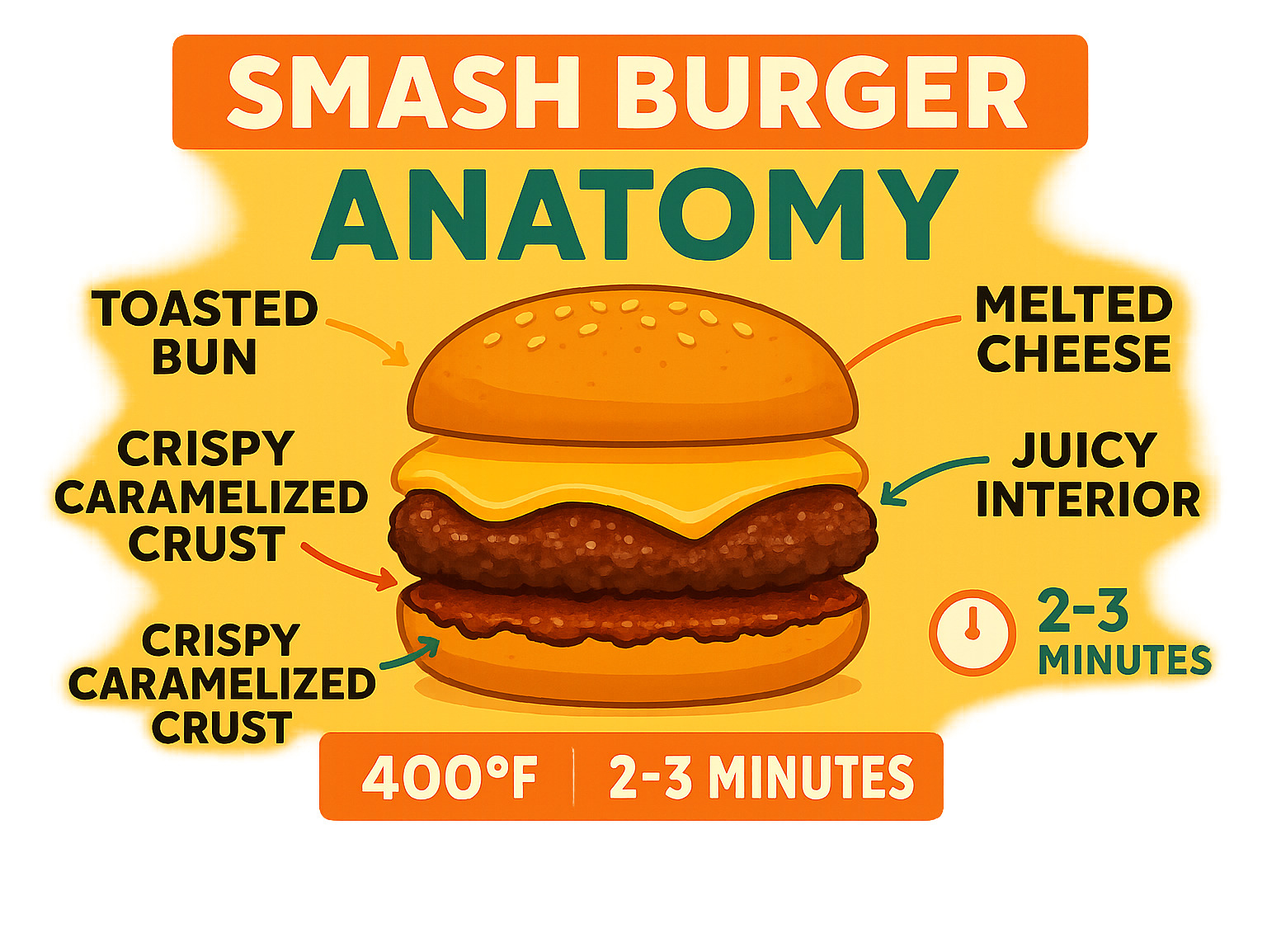
How the Smash Burger Was Born
Picture this: it’s the early 1960s, and a cook at a small Kentucky restaurant called Dairy Cheer is staring at a ball of ground beef. Instead of forming it into a thick patty like everyone else, he grabs a bean can and smashes that meat flat against the hot griddle. What happened next changed burger history forever.
That simple moment of innovation created the foundation for what we now call the smash burger. The technique spread through Midwest diners, where busy cooks found that pressing patties thin didn’t just cook them faster – it made them taste incredible.
The 21st century brought an unexpected twist. What started as a Depression-era cooking hack suddenly became the hottest trend in American dining. Chain restaurants and independent joints alike began embracing the smash method, sparking what food writers now call “The Smash Burger Revolution Has Arrived”.
The Original Smash Burger Story
The hero of our story isn’t a famous chef – it’s a humble No. 10 bean can. That’s right, the very first smash burger was created when a resourceful cook at Dairy Cheer pressed down on beef balls with whatever flat, heavy object he could find.
From that single Kentucky location, the smash technique has exploded into a multi-billion dollar segment of the food industry. Modern chains have served tens of millions of smash burgers since the early 2000s, with entire restaurant concepts built around this simple pressing method.
Smash Burger vs. Traditional Burgers
Smash burgers aren’t just thin versions of regular burgers – they’re completely different with their own rules and rewards.
Traditional pub-style burgers play it thick and slow with hefty 1/3 to 1/2 pound patties that are 3/4 inch thick or more. Smash burgers flip that script entirely with lean 2-4 ounce patties pressed down to about 1/4 inch thickness.
| Feature | Smash Burger | Traditional Burger |
|---|---|---|
| Patty Weight | 2-4 ounces | 4-8 ounces |
| Thickness | 1/4 inch | 3/4+ inch |
| Cook Time | 4-6 minutes total | 8-12 minutes total |
| Crust Ratio | High (lots of crispy edges) | Low (minimal crust) |
| Texture | Crispy outside, juicy inside | Uniformly tender |
The real difference comes down to surface area. Smash burgers maximize the amount of meat touching that screaming-hot griddle, creating more of those flavor-packed crispy edges.
The Science Behind the Perfect Crust
Ever wonder why a smash burger tastes so much better than a regular burger? The answer lies in fascinating food science that turns simple ground beef into a flavor powerhouse.
The star is the Maillard reaction – the chemical magic that happens when proteins and sugars in beef hit temperatures above 280°F. This creates hundreds of new flavor compounds that make your taste buds dance.
The 80/20 beef blend isn’t random – it’s the sweet spot where science meets deliciousness. The fat renders out as the patty cooks, creating natural basting while feeding the Maillard reaction. Too lean and you won’t get proper browning. Too fatty and you’ll get a greasy mess.
Surface area contact is everything. When you smash that beef ball onto a screaming-hot, ungreased griddle, you’re maximizing how much meat touches the cooking surface. More contact means more Maillard reaction, which means more flavor compounds.
Why Smashing Works
The physics behind smash burgers is actually pretty cool. When you press that patty flat, heat conducts through it much more efficiently than through a thick burger, creating thousands of tiny contact points where heat transfer happens instantly.
This rapid heat transfer creates those incredible lacy, crispy edges. Each craggy bit represents a spot where the Maillard reaction went into overdrive, concentrating flavors in ways that thick patties simply can’t achieve.
Crafting a Smash Burger Crust at Home
Getting restaurant-quality results at home is totally doable. Your pan needs to reach around 375-400°F – hot enough that a drop of water immediately sizzles and disappears. Preheat your cast-iron skillet for at least 5 minutes on medium-high heat.
Listen for timing cues. You should hear an immediate, aggressive sizzle when the beef hits the pan. Resist the urge to peek for at least 2 minutes. You’ll know it’s ready to flip when the edges turn gray and you can see that beautiful crust forming.
Use a thin, flexible metal spatula to get under every precious bit of that crust. Angle your spatula at about 15 degrees and work it confidently under the patty – don’t be gentle here.
Step-by-Step: Making a Smash Burger at Home
There’s something magical about creating the perfect smash burger in your own kitchen. The sizzle when the meat hits the hot pan, the aroma of caramelizing beef, and that first bite of crispy-edged perfection – it’s all within reach with the right technique.
The foundation starts with 4-ounce portions of 80/20 ground chuck. Here’s the key: divide each portion into two 2-ounce balls. This double-patty approach maximizes that coveted crust-to-meat ratio that makes smash burgers so irresistible.
One simple trick transforms the process: the parchment paper method. Place a small square of parchment over each beef ball before smashing. This prevents sticking and keeps everything clean.
The double-patty build creates twice the crispy surface area while keeping the interior juicy. Cheese melting happens lightning-fast with thin patties, so timing becomes crucial. The moment you flip that first patty, add your cheese slice.
Don’t overlook bun toasting – it’s the unsung hero of burger construction. A properly toasted bun stands up to all those delicious juices without turning soggy.
For more inspiration with ground beef, explore our complete Ground Beef Recipes collection.
Equipment Checklist for Smash Burger Success
You don’t need a fancy kitchen to make restaurant-quality smash burgers, but having the right tools makes all the difference.
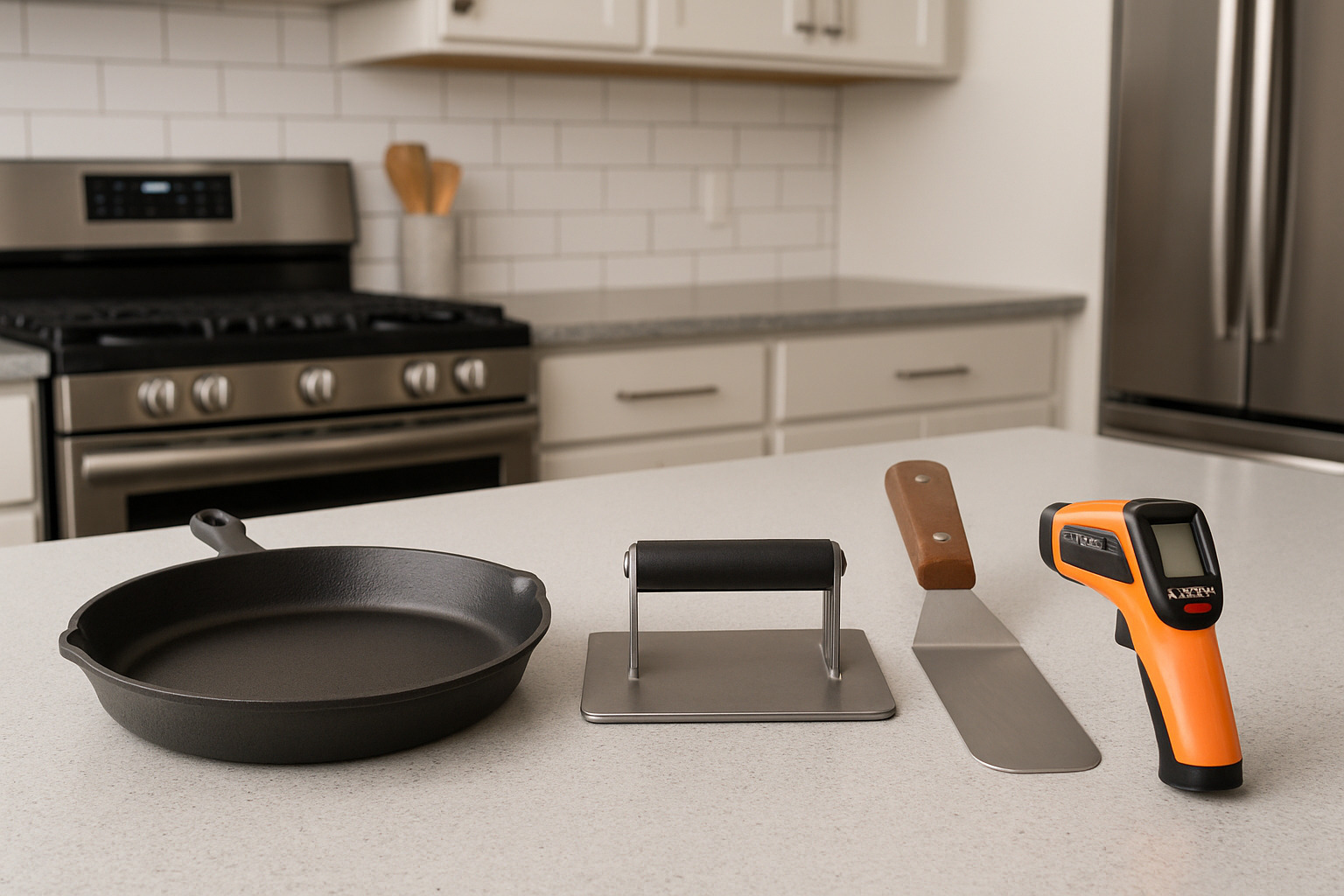
Your cast-iron skillet or griddle is absolutely non-negotiable. Cast iron retains and distributes heat evenly, creating that beautiful, consistent crust.
A flat burger press or heavy spatula gives you the leverage needed for proper compression. A thin, flexible metal spatula is your secret weapon for getting under that delicate crust without breaking it.
An infrared thermometer takes guesswork out of pan temperature. You want that surface hitting 375-400°F for optimal crust development.
The Ultimate Smash Burger Process
Start by portioning and chilling your meat. Take one pound of 80/20 ground chuck and gently divide it into eight 2-ounce balls. Keep them loose and chill for at least 30 minutes.
When ready to cook, heat that skillet until smoking hot. Place your beef balls on the surface and immediately press them down to about 1/4-inch thickness using your parchment paper method. Press firmly, hold for 10 seconds, then step back. Never smash twice.
Season timing is everything. The moment you lift that press, hit the patties with kosher salt and black pepper while the surface is still raw.
After 2-3 minutes, when those edges turn beautifully brown and crispy, flip and add cheese. Use your thin spatula to get under every bit of that crust. Immediately place cheese slices on half your patties.
Cook for 1-2 more minutes, then stack and serve. The whole process takes less than 10 minutes.
Toppings, Variations, and Creative Twists
The beauty of a smash burger lies not just in its crispy crust, but in how that perfect base welcomes endless creative possibilities. While purists might argue for keeping things simple, there’s something magical about how the intense beef flavor plays with different toppings and sauces.
American cheese remains the gold standard because it melts beautifully on those hot, thin patties. Dill pickles provide bright acidity that cuts through the rich beef fat. And a simple special sauce – usually mayo mixed with ketchup, mustard, and secret ingredients – ties everything together.
But here’s where things get exciting. Spicy jalapeño variations add heat without masking the beef’s flavor. A bacon stack layers smoky, salty goodness. And truffle mushroom combinations bring earthy, umami-rich notes that lift the entire experience.
Vegetarians aren’t left out. Vegetarian black-bean patties can absolutely be smashed using the same technique, choosing patties with enough binding agents to hold together under pressure.
The world of global sauces opens incredible possibilities. Korean gochujang mayo brings sweet heat, Japanese teriyaki glaze adds savory-sweet depth, and Mexican chipotle crema delivers smoky spice.
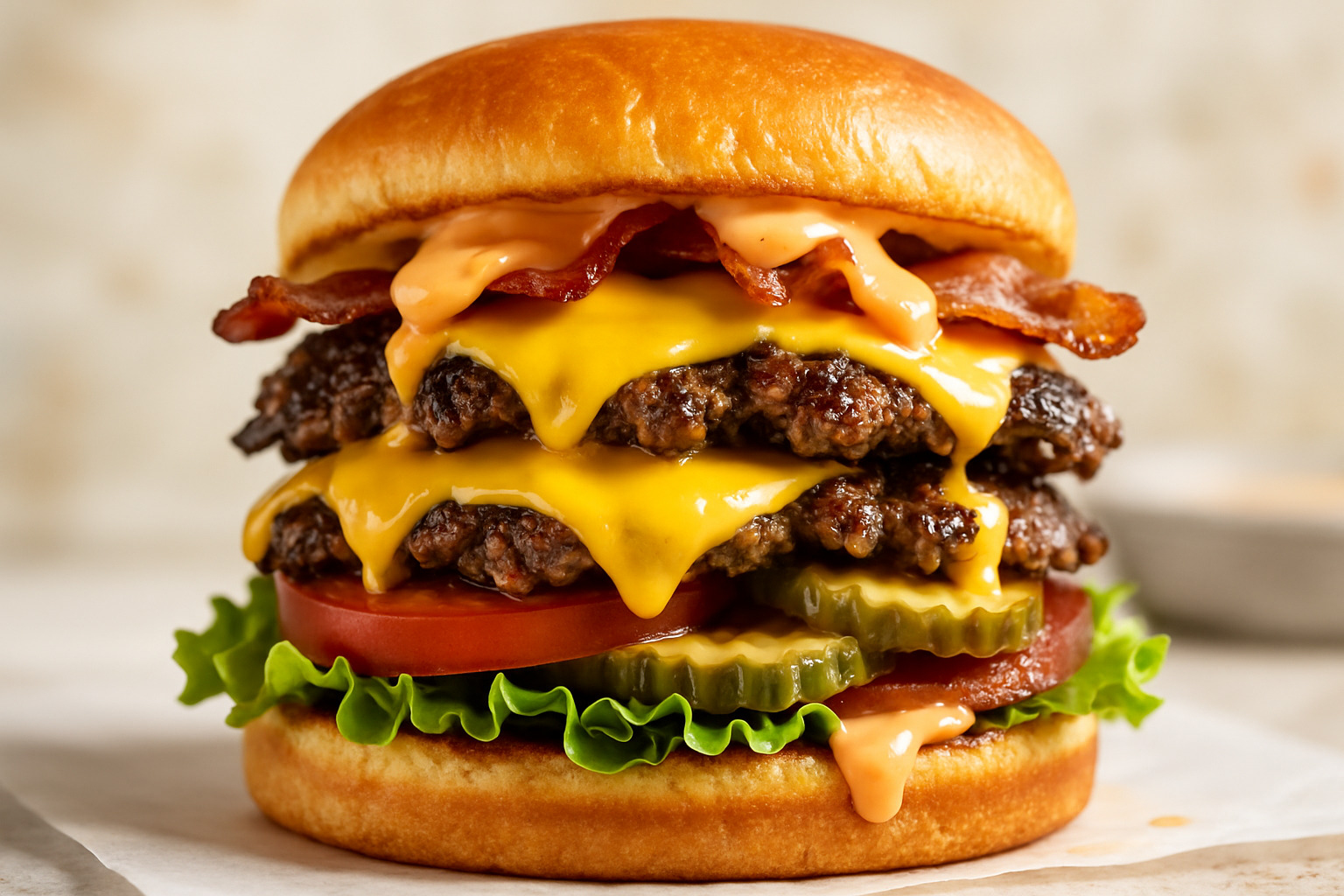
Sides & Pairings to Complete Your Smash Burger Meal
A great smash burger deserves thoughtful companions. Shoestring fries remain the classic choice – their thin, crispy texture mirrors the burger’s crispy edges. Coleslaw acts as a palate cleanser, cutting through rich beef fat. Craft sodas and hand-spun shakes complete that nostalgic diner experience.
For more inspiration on creating memorable dining experiences, check out our guide to the Best Food Destinations where food meets travel in delicious ways.
Nutrition, Alternatives, and Health Tips
A typical double smash burger with cheese clocks in between 480 to 780 calories, depending on toppings and bun selection. The beauty of the smash technique is getting maximum flavor from less meat – those crispy, caramelized edges pack so much taste that you don’t need a massive patty to feel satisfied.
You’re looking at 25-30 grams of protein, 30-40 grams of fat, and 25-35 grams of carbohydrates from the bun. That protein content is impressive and helps explain why a good smash burger keeps you satisfied for hours.
Lighter bun swaps can dramatically reduce calories. Try wrapping your smash burger in crisp lettuce leaves, or use a portobello mushroom cap as your “bun.” Thin whole grain buns offer another smart middle ground.
Because the flavor is so concentrated and satisfying, you naturally need less food to feel content. Smart modifications include using turkey or chicken for lower saturated fat, loading up on vegetables, and choosing mustard over mayo-based sauces.
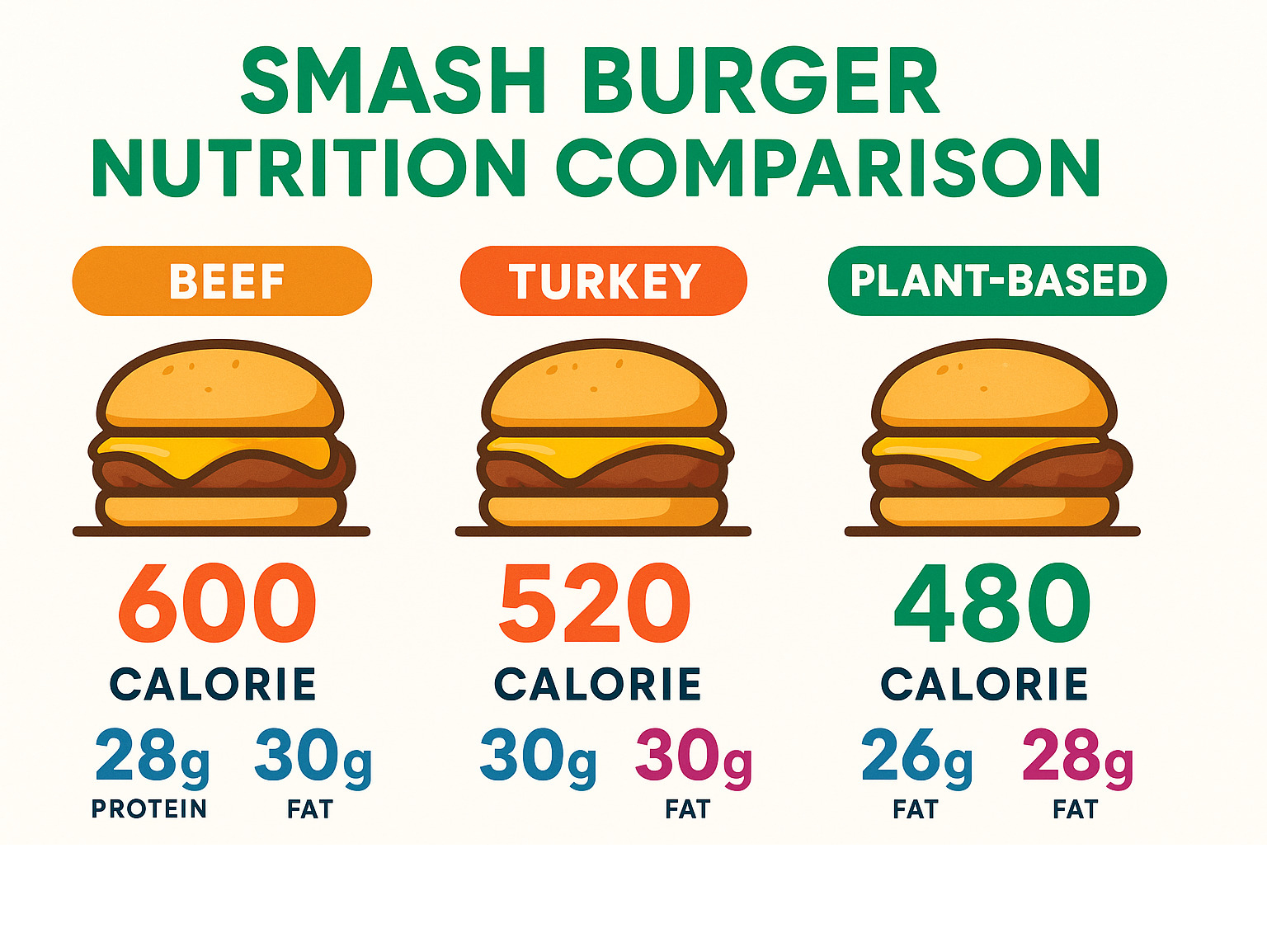
Vegetarian and Plant-Based Smash Burger Options
Creating a plant-based smash burger requires understanding what makes the technique successful with beef – then adapting those principles to vegetarian ingredients.
Bean-based patties work beautifully when they include binding agents like flax eggs or breadcrumbs. Seitan-based patties offer the closest texture to traditional beef and respond incredibly well to smashing.
The flavor game changes with plant-based versions. Umami boosters become your secret weapons – think mushroom powder, soy sauce, nutritional yeast, and tomato paste. Cooking adjustments include using slightly lower heat and pressing more gently to avoid breaking apart.
Frequently Asked Questions about Smash Burgers
What’s the best meat blend and fat ratio?
80/20 ground chuck is your best friend for smash burger perfection. This ratio gives you everything needed for crispy, caramelized edges without turning your burger into a greasy mess. The 20% fat renders out during smashing, creating natural basting while fueling the Maillard reaction.
Some enthusiasts swear by 75/25 blends, especially with premium cuts like short rib or brisket. But go much higher than 25% fat and your smash burger might fall apart during cooking.
Can I make a smash burger on a grill or outdoor griddle?
Absolutely! Outdoor griddles are fantastic for smash burgers. Those large, flat surfaces retain heat beautifully. The key is getting your surface screaming hot – 375-400°F.
Gas grills with griddle attachments are perfect. For charcoal grills, place a cast-iron griddle right over the coals. The direct heat can even add subtle smoky notes.
How do I keep the patty juicy without losing the crust?
The golden rule: smash once and only once. That second press squeezes out precious juices. Your initial smash needs to be confident – press down firmly, hold for 10 seconds, then step back.
Temperature control makes all the difference. Your surface needs to be hot enough for immediate searing but not so blazing that it burns the outside. Don’t touch that patty while it’s cooking – let that crust form undisturbed for the full 2-3 minutes before flipping.
Conclusion
The smash burger phenomenon has completely transformed how we think about burgers, proving that the best innovations come from simple ideas. What started as a practical solution in a Kentucky diner has evolved into a culinary movement reshaping casual dining.
This isn’t just about following a trend – it’s about understanding why certain techniques work brilliantly. The smash burger succeeds because it maximizes everything we love: that perfect contrast between crispy, caramelized edges and juicy, tender centers.
The beauty lies in their accessibility. You don’t need fancy equipment or culinary training. A hot cast-iron skillet, some 80/20 ground chuck, and the confidence to press that beef ball flat – that’s really all it takes.
What makes this method special is how it democratizes great burger-making. Home cooks can achieve restaurant-quality results by understanding key principles: maximum surface contact creates maximum flavor, proper timing prevents overcooking, and double-patty construction gives you twice the crispy goodness.
The smash burger revolution reflects something deeper about our food culture. In an era of complicated recipes and expensive ingredients, these burgers remind us that the best flavors often come from mastering basic techniques.
As this trend continues growing, one thing remains clear: the smash burger has earned its place in American food culture. Whether you’re flipping them at home or finding new variations at local spots, these crispy-edged beauties represent everything great about comfort food done right.
Ready to expand your culinary horizons beyond the burger? Explore our travel-for-food trips guide to find how different cultures approach street food and casual dining, from New York City’s innovative food scene to global comfort food traditions!

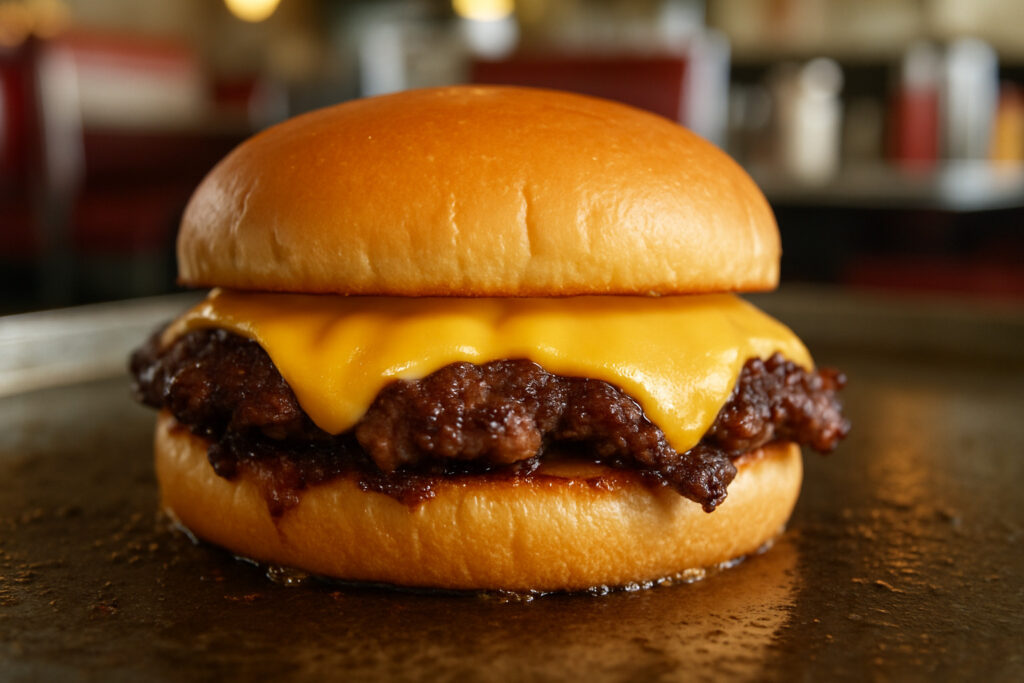




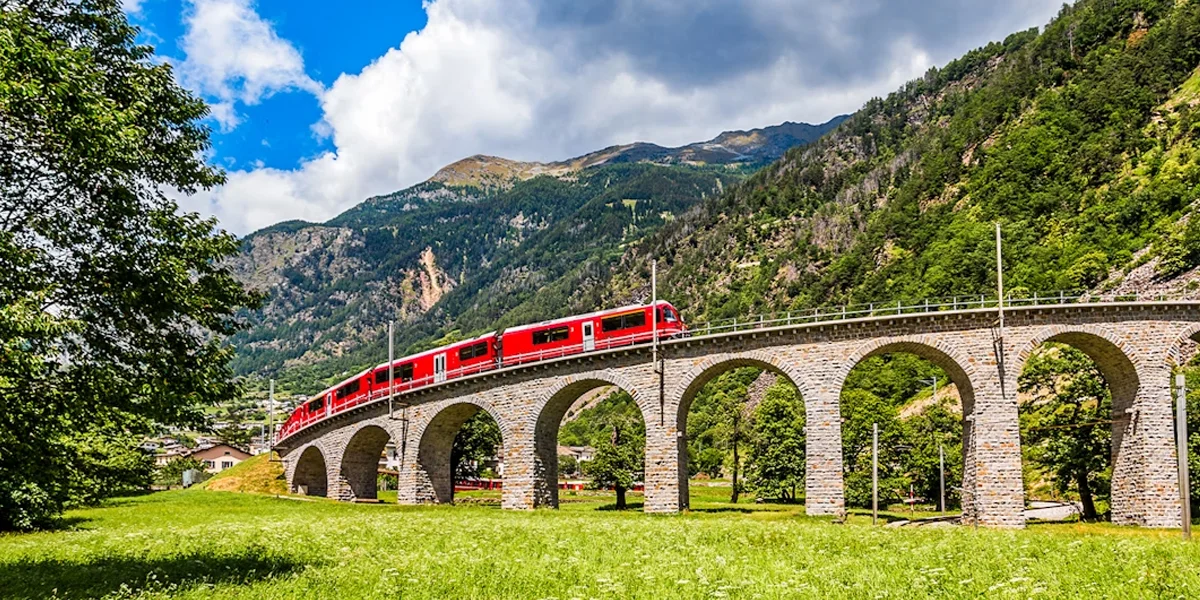
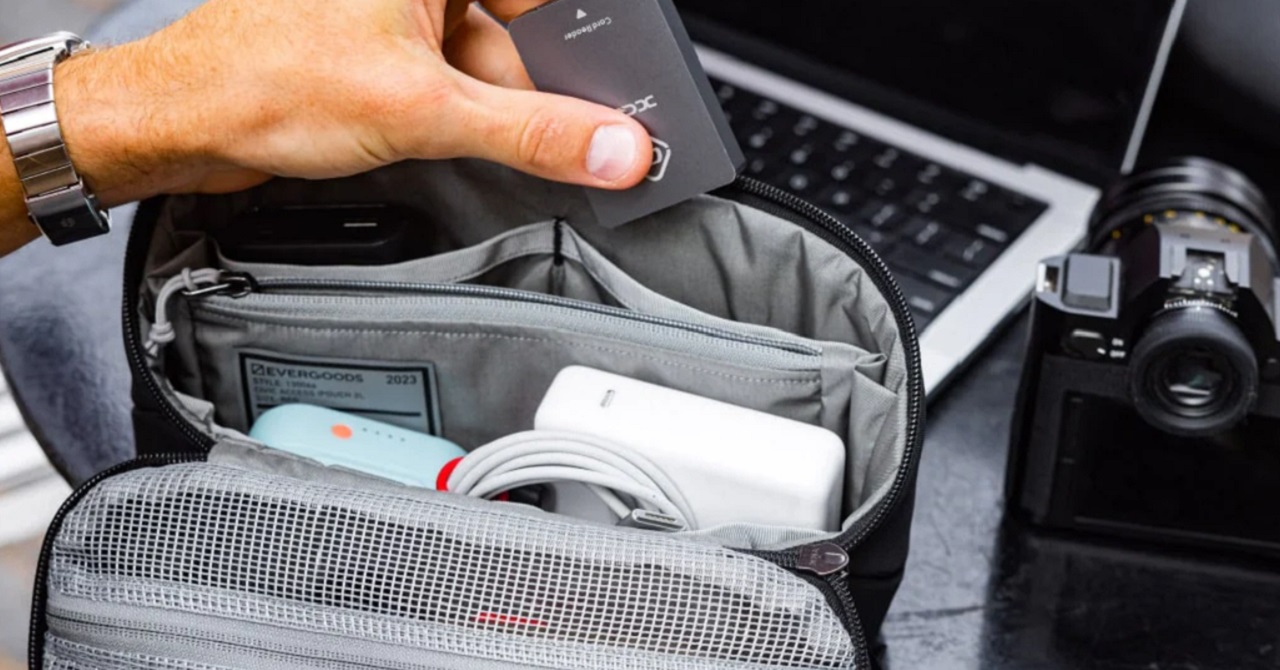

1 thought on “The Ultimate Guide to Smash Burgers: What They Are and Why They’re Popular”
Pingback: All About Skirt Steak: Cuts, Cooking Tips, and More - The Dining Destination
Comments are closed.